Dark matter rises to its biggest challenge

And succeeds!
“Faced with the choice between changing one’s mind and proving that there is no need to do so, almost everybody gets busy on the proof.”
–J. K. Galbraith
One of the most important innovations in understanding the Universe and how it came to be the way we see it today is dark matter. This unseen, invisible form of mass helps hold the galaxies, groups and clusters in the Universe together, and enables us to form the great cosmic web of structure we see today. Last month, a new study came out showing that individual galaxies appear to rotate in a way that’s solely dependent on the normal matter (protons, neutrons and electrons) inside, without any need for dark matter. The incredible challenge it put forth was for dark matter to explain why this would be the case. Remarkably, just three weeks later, a duo of researchers have risen to the challenge, and done exactly that.
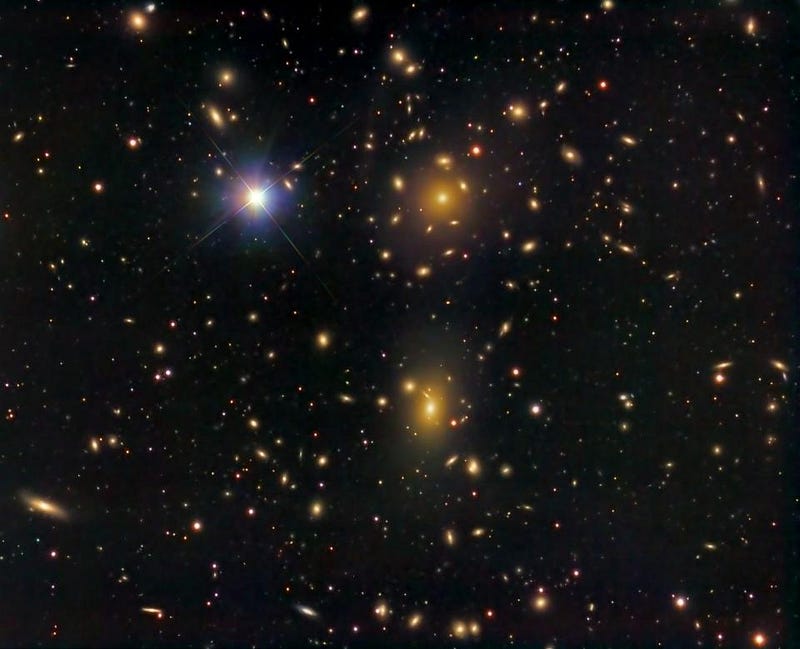
Dark matter is known, from a variety of independent observations, to comprise about six times as much mass as normal matter in the Universe. Without it:
- fluctuations in the Cosmic Microwave Background wouldn’t exhibit the same patterns,
- small, medium and large sized galaxies would form in vastly different numbers,
- galaxy clusters would fly apart without the additional gravitational force,
- gravitational lensing observations would reveal far less massive quasars and groups,
- and individual galaxies would rotate faster on the interior than on the outskirts.
Yet if we look at that last observation in great detail, dark matter appears to let us down.

According to the simplest simulations, dark matter should form a massive halo of incredible size at various “seed” locations in the Universe. The normal matter should fall into these halos, clustering in the center, pancaking into a disk and forming a spiral structure over time. The dark matter ought to provide additional gravitational forces, enabling the galaxies to rotate faster at the outskirts than they would in the absence of dark matter. But when it comes to the details of these simulations, the dark matter halo should be universal and independent of size or scale. When we look at real galaxies, however, sometimes the normal matter is a substantial fraction of what’s there; in others, dark matter totally dominates.

Last month, a new paper was accepted for publication in Physical Review Letters. Inside it, scientists Stacy McGaugh, Federico Lelli and James Schombert observed 153 different galaxies with a wide variety of shapes, masses, sizes and amounts of gas. Yet what they found was astounding: independent of any of those galactic properties, independent of anything a dark matter simulation would tell you, every galaxy obeyed exactly the same relation. And oddly enough, the rotational properties of each and every galaxy appears to depend only on the normal, observable matter within it. It was a hugely powerful argument for an alternative idea to dark matter: the idea that perhaps the laws of gravity need modification, and that dark matter wasn’t real after all.
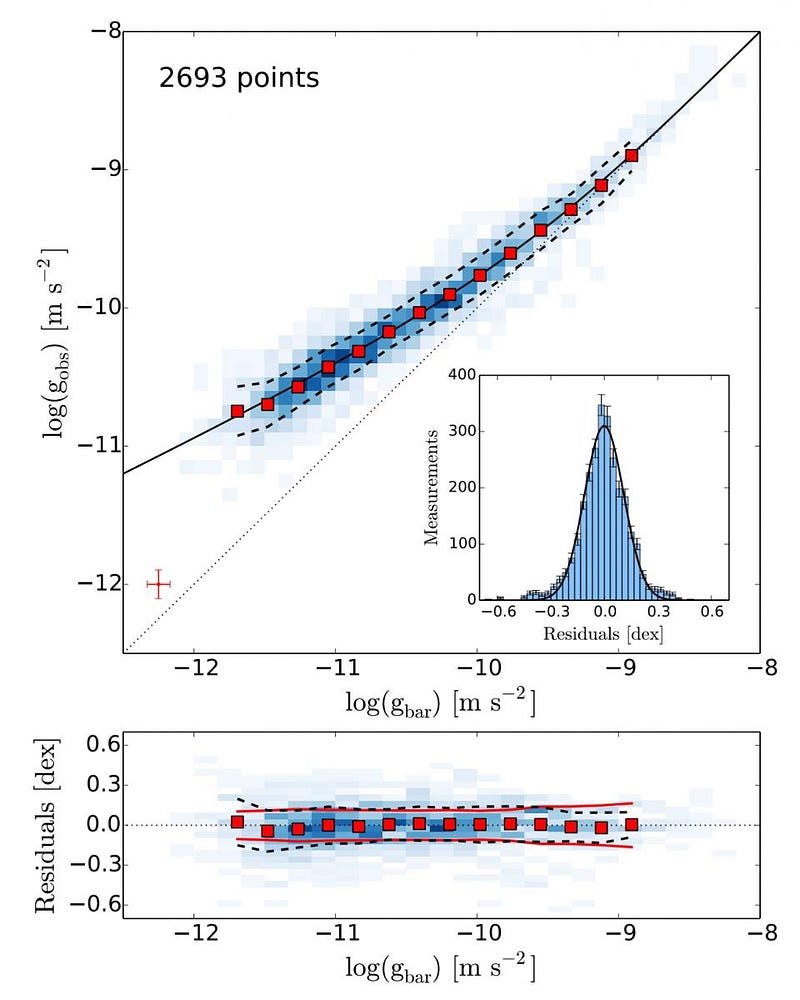
The gauntlet was cast. In order to rise to this challenge, dark matter would have to explain why this weird relation — between the observed baryons (the normal matter) and the total acceleration — existed completely independent of any other properties. After all, the dark matter fractions of each of these galaxies might be different, yet they still all exhibited the same relation.
Now, modern dark matter simulations are a little more sophisticated than the original ones from 20 years ago. In particular, they take into account an effect that’s very important: the fact that the existence and formation of massive stars and black holes have big effects on the formation of new stars and the density profile of dark matter. In general, this is known as a feedback effect, where a detail in one aspect of a galaxy affects many other aspects. A large number of problems associated with dark matter in individual galaxies, such as the cuspy-core problem and the missing dwarf satellites problem, go away when this feedback is added.
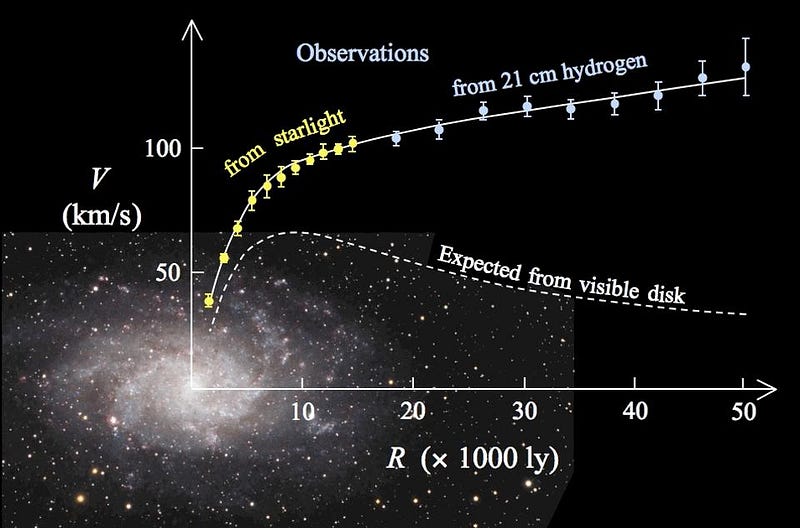
When you add in gas dynamics to the dark matter simulations, along with reasonable models for star formation, radiative cooling and stellar feedback, the big question becomes whether this new relationship emerges?
Two scientists from McMaster University, Ben Keller and James Wadsley, set out to test exactly this. There was a pre-existing sample of simulated dark matter galaxies that take this feedback into account: the McMaster Unbiased Galaxy Simulations 2 (MUGS2) sample of luminous galaxies. Although 18 galaxies is not nearly as many as 153, the results were immediately striking.
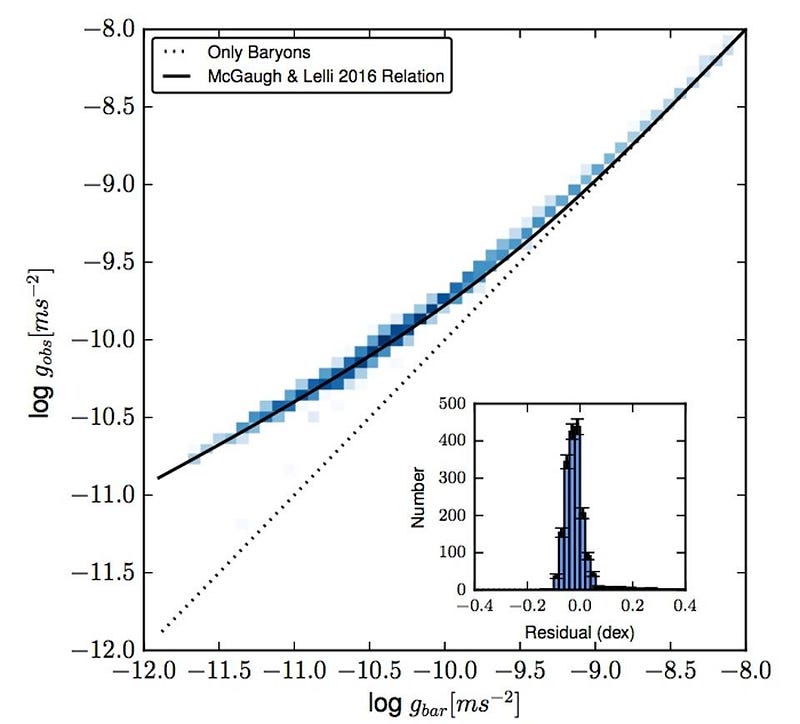
The relationship is reproduced exactly, to within the statistical errors of the simulation. It’s true that these are only galaxies on the more massive end (no less than 10% of the Milky Way’s mass), while the earlier study included a much wider range of masses and brightnesses: down to less than 0.01% of the Milky Way’s mass. But this is an incredible success for dark matter, and points to one indisputable conclusion about the earlier troubles with dark matter: they are the result of too naïve a simulation. When you add in the additional known, relevant physics, the problems disappear. And, most importantly, the big challenge to dark matter is not only met, but it didn’t take anything new to do it. At least one of the simulations that people were already using had the answer inside all along.
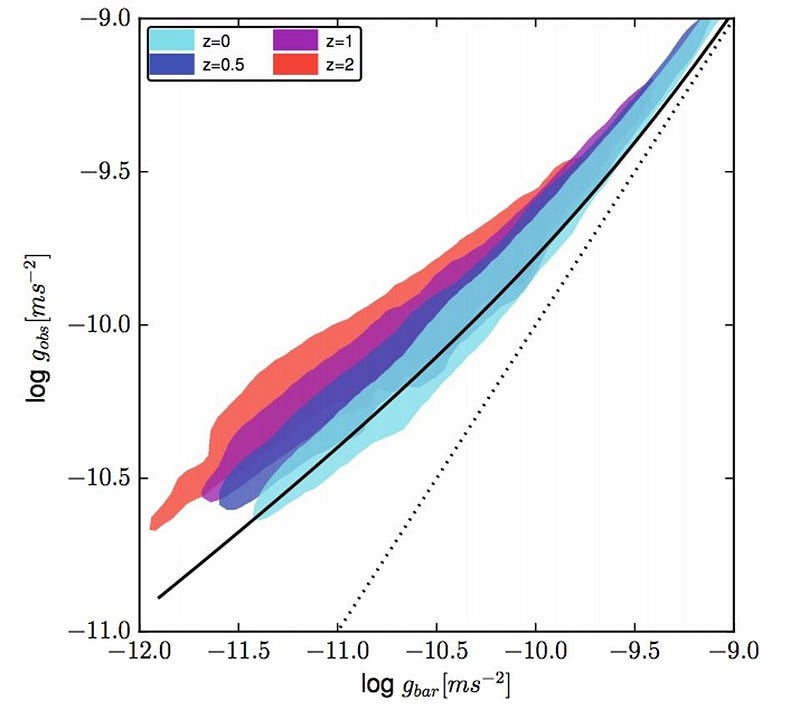
But there’s more that Keller and Wadsley discovered that could support the dark matter hypothesis in an entirely new way. Because their simulations began billions of years ago, they can trace the evolution of these 18 galaxies over much of the Universe’s cosmic history. What they find is that the younger these galaxies were — and hence, the farther back in time we looked at them — the more there ought to be a deviation from this observed relationship. Dark matter predicts that galaxies at high redshifts should have different correlations than the ones seen at the present day. Sabine Hossenfelder has also noted this.
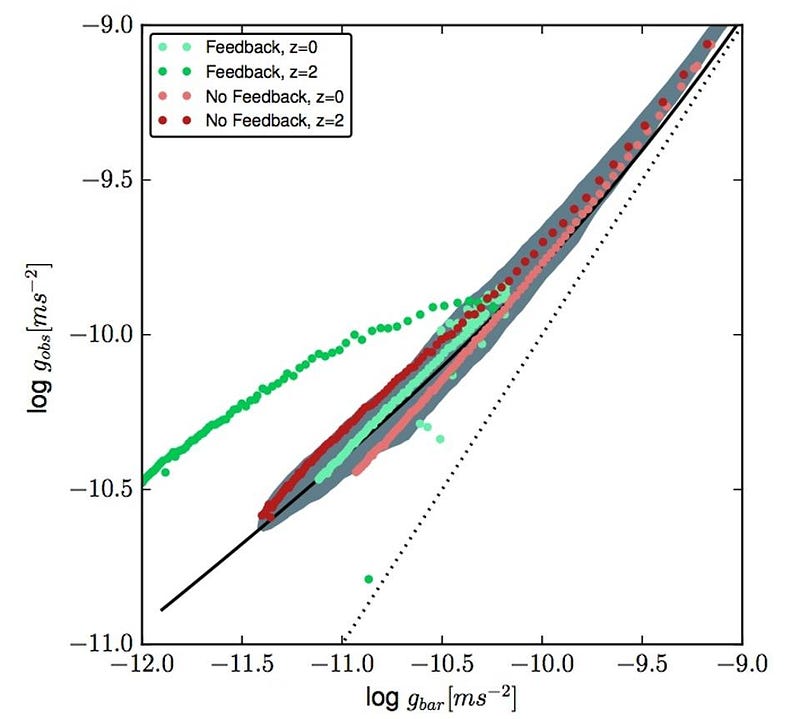
The work that uncovered this relationship between the observed normal matter and the gravitational acceleration is still very important, and will continue to be. But they also underscore the important role of feedback in forming realistic galaxies; it is not enough to merely simulate the dark matter and to assume that the rest of the Universe will fall out of that. Normal matter might only be 13–17% of the mass in the Universe, but the way it interacts with itself is of tremendous importance for structure formation on galaxy scales and below.
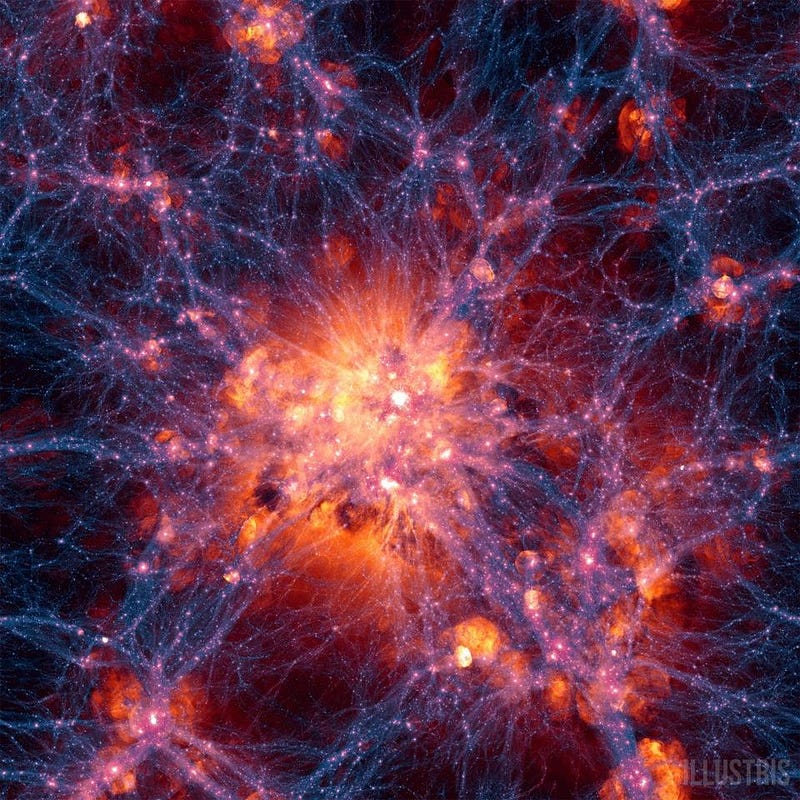
Additionally, all future dark matter simulations will need to reproduce this relationship; simulations that fail to do so will need to be discarded as in conflict with the Universe we observe. But if we can begin to measure the rotation curves of galaxies at great distances, we should expect to see a remarkable evolution in this relation. If we do, then there’s another victory in store for dark matter. If we don’t, perhaps the modified gravity camp has it right after all. After all, the challenge for any theory of the Universe is to reproduce the full suite of results available at any given time. No matter what, this is a perfect illustration of how science moves forward: one experiment, one measurement, one observation and one simulation at a time.
This post first appeared at Forbes, and is brought to you ad-free by our Patreon supporters. Comment on our forum, & buy our first book: Beyond The Galaxy!





